Reflections on a Particular Moment — Do you see what I see?
I am living with the knowledge that one of the people closest to me may, perhaps sooner than I expect, completely forget who I am. Memories seem like the most personal, subjective things in the world, and yet they are also like precariously stacked building blocks on which various shared relationships rest. So, how much of my own life will be lost when the last traces of the memory of me, and our relationship, lose their connections, thereby existing only as isolated fragments of a perpetual ‘now’? Not until now have I really appreciated how mysterious and terrifyingly ephemeral the compass points of ‘memory’ are.
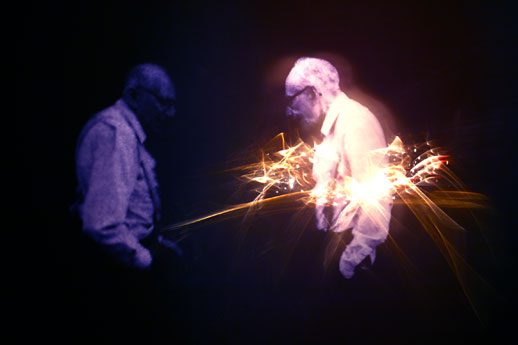
“No matter how easy it is to surf the Net or how inconvenient it is for our real bodies to be weighed down by the forces of gravity, the act of trying to unravel self-consciousness as an anchor for our fragile and unreliable body is proof that our bodies are fated to be with us until the very end.”
‘Trace Elements – spirit and memory in Japanese and Australian photomedia’ is, on the surface, not dissimilar to exhibitions at other large Tokyo museums of contemporary art. Two curators — Shihoko Iida from Tokyo Opera City Art Gallery and Bec Dean from Performance Space, Sydney — have selected a group of artists from their respective contexts who would not usually find themselves conceived of as a group. Aesthetically, being collected under the wide umbrella term of photomedia, we find dark spaces in which “photography”, “video”, or “installation” are juxtaposed to tease out each individual artist’s style, while maintaining the notion that all the works emanate from some ‘proto/photo’ ancestor. The works all use photomedia to deal with issues of memory, spirit and mediated identity.
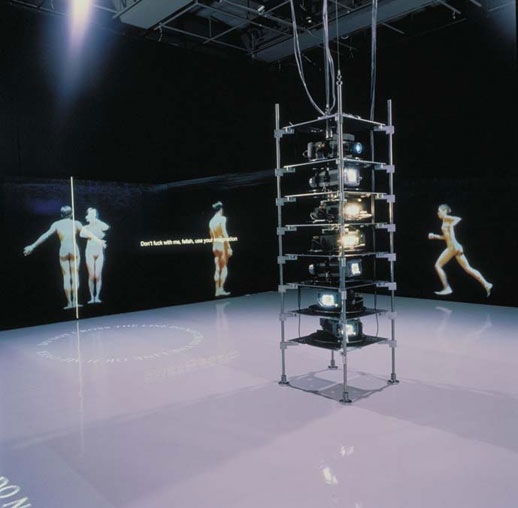
Iida Shihoko was quite clear that this exhibition was not about simply presenting the “new”. Nevertheless, most works are quite recent, and one — Kazuna Taguchi’s photographic series ― has been specifically commissioned. Some works readily stand out, most obviously the late Teiji Furuhashi’s large installation, LOVERS, around which the whole exhibition seems to orbit, and which Iida suggested was a central work in the curatorial concept. It was originally presented in 1994, when Furuhashi was the key member of the now well-known hybrid performance group Dumb Type, whose hybrid performance piece S/N is also being presented as a film, throughout September. Other works, such as the photographic series by Taguchi or Jane Burton, are full of suggestion that readily spark myriad associations, but may take time to sink into – more time than some may be willing to give.
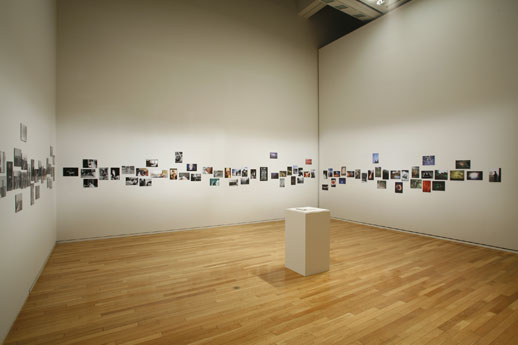
Seiichi Furuya’s haunting photographs — a sequence of images documenting years spent living with his emotionally troubled wife, who committed suicide in 1985 — are a reminiscence on the traces of a loved, living body that gradually slipped beyond the clutches of reality. Having relentlessly used his camera as a point of contact with his life, numerous minor details assume an incredible poignancy in retrospect, yet must surely have seemed mundane or insignificant at the time. Furuya’s work nowadays consists more of re-editing these distant traces, to make sense of his past for the sake of the present. The result is a set of images in which it seems as though time has stopped, neither clearly in the present nor the past, and Furuya has managed to steal into the cluttered halls of his memory, capturing belated snapshots of ‘that day…’, or ‘the walk we took after…’, ‘the way you used to…’, ‘what I saw when you…’ – the completely nondescript sense of time that forms when two people are living it together.
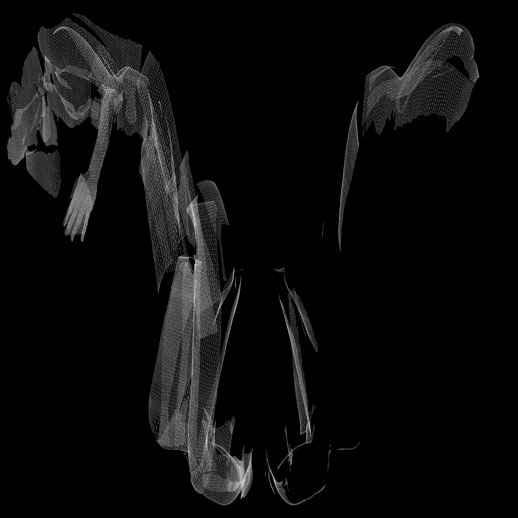
The merging of translucent, projected bodies in Teiji Furuhashi’s LOVERS, which move around the viewer, and through which viewers themselves move, expresses the immateriality of identity. Meanwhile, Sophie Kahn uses digital scan technology, which maps the body’s intricate dimensions and yet hollows it out, rendering flesh as a slowly fraying digital fabric. Kahn’s work also shows how visual artists need to continue to appropriate image making technologies to interrogate not simply what these technologies do, but what they implicate about the ever changing conditions for being ‘human’. Similarly, the mixed reality of Alex Davies’ video work or Kazuna Taguchi’s photography suggest how material presence is increasingly a kind of virtual or augmented reality; we literally see our ‘self’ through these visual technologies.
Such ‘ghosts in the machine’, as co-curator Bec Dean puts it, obliquely connect to issues of Australia’s indigenous history in the work of Genevieve Grieves, whose use of video as ‘real-time photographs’ suggests that history itself is a virtual reality, constantly open to being reenacted and redefined from the present. In addition to her work as an artist, Grieves works as an image historian in Australia, tracing historical photographs of ‘anonymized’ ‘Aborigines’ to their living descendents. Such image repatriation establishes crucial recognition of long neglected specific historical identities for indigenous people in Australia. Yet her artwork, addresses issues of forced assimilation, particularly the ‘stolen generation’ — a generation of indigenous children who were taken from their families to be “properly” educated at mission schools and placed in white families — in a more nuanced, subversive reading of the authorial power of visual technologies themselves, both past and present.
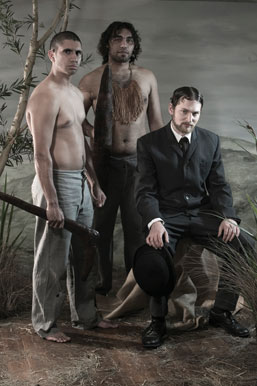
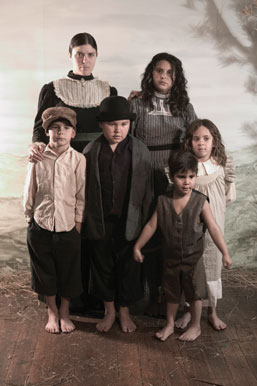
According to Bec Dean, “the curatorial intention behind ‘Trace Elements’ is not to survey, but rather to reflect on a particular moment.” Nevertheless, many questions remained. Why an ‘Australia-Japan’ exhibition, when every one else had some Beijing Olympics angle to their program? Why now, two years after the Australia-Japan Year of Exchange? Moreover, the artists gathered under these ‘national’ labels seem more like a group of individual artists, rather than examples of any culturally specific world view.
With these questions in mind, I spoke with Iida about how such a project came about. It became clear that this exhibition intended to build on fledgling ties established through the 2006 Australia-Japan Year of Exchange; moreover, its ‘cross-cultural’ statement of intent seems to have been almost a strategic ruse employed by the curators to attract resources, while effectively creating an exhibition which challenges the limited networks that such cultural institutions typically foster through one-off ‘international’ exchange periods.
In effect, this exhibition is firstly a conversation between two curators, each of whom wishes to extend the bounds of their local networks. Unassuming and straightforward as it is, ‘Trace Elements’ emerges as an example of what may be a small but dynamic trend in curatorial initiative in the Japanese art scene, with far-reaching implications. After our conversation, it felt as though, for the curators at least, ‘Trace Elements’, may not simply be an exhibition, but rather a subtle manifesto.
To read an interview with Shihoko Iida, the curator of this exhibition, click here.
Olivier Krischer
Olivier Krischer


